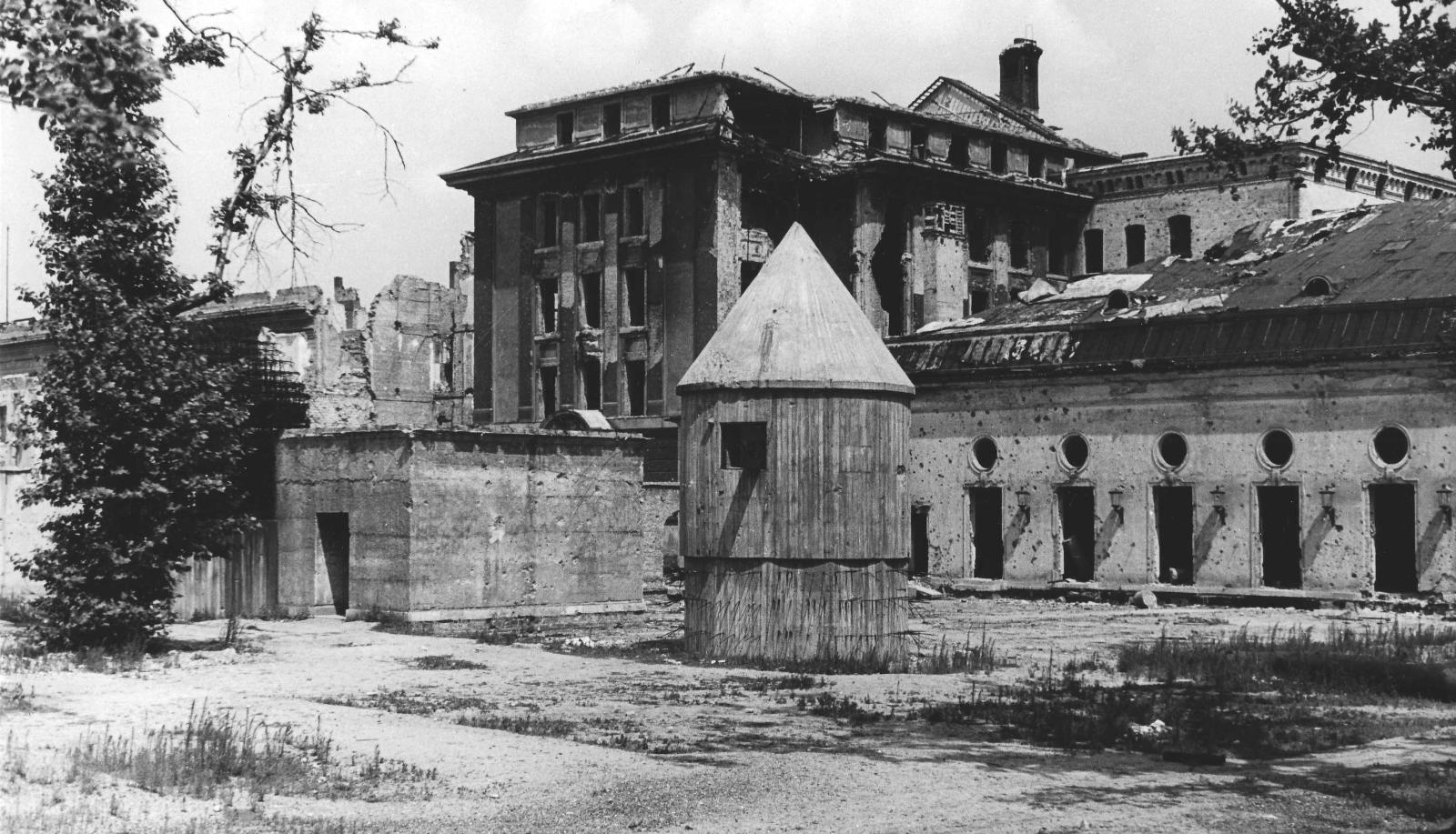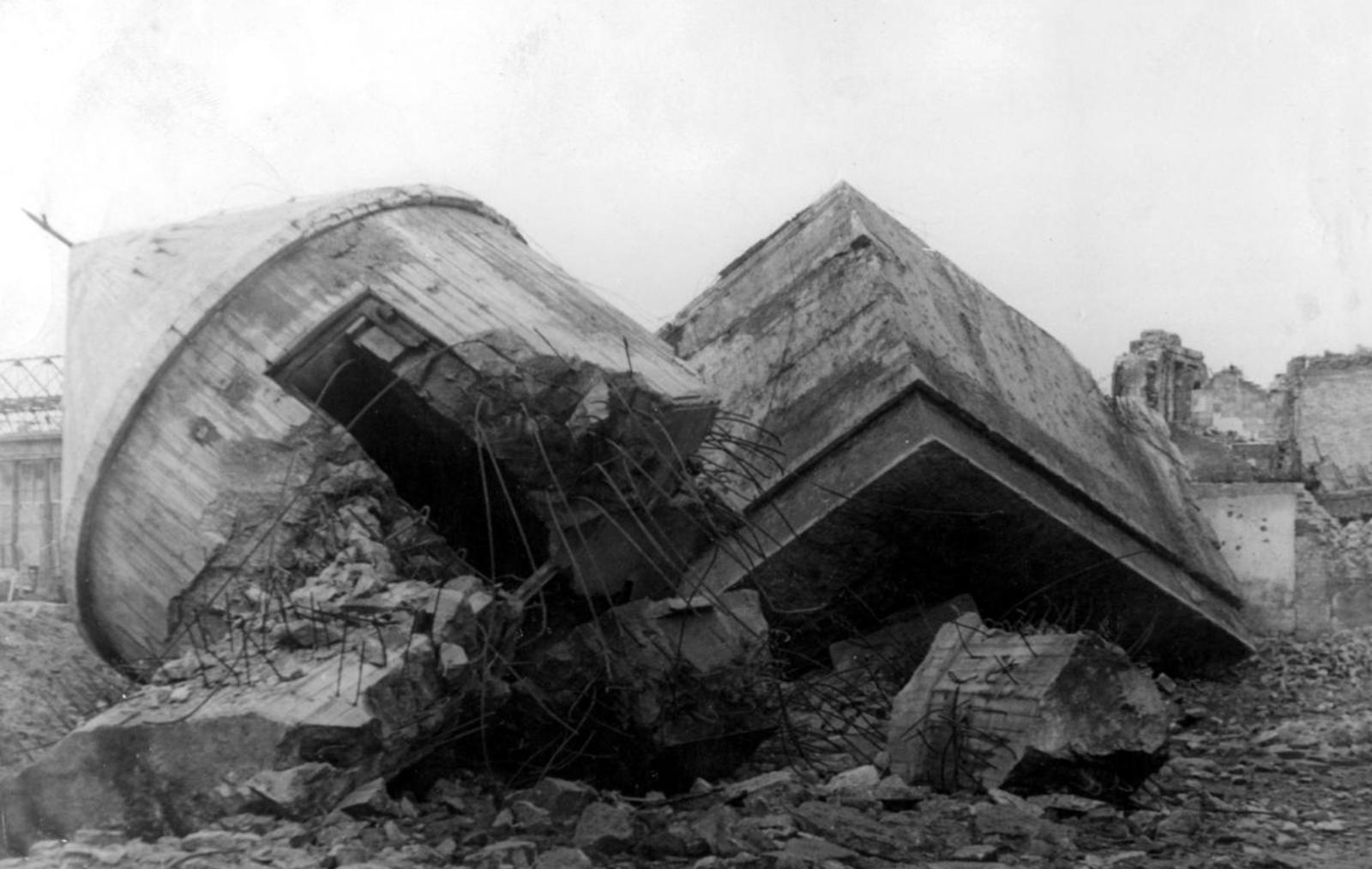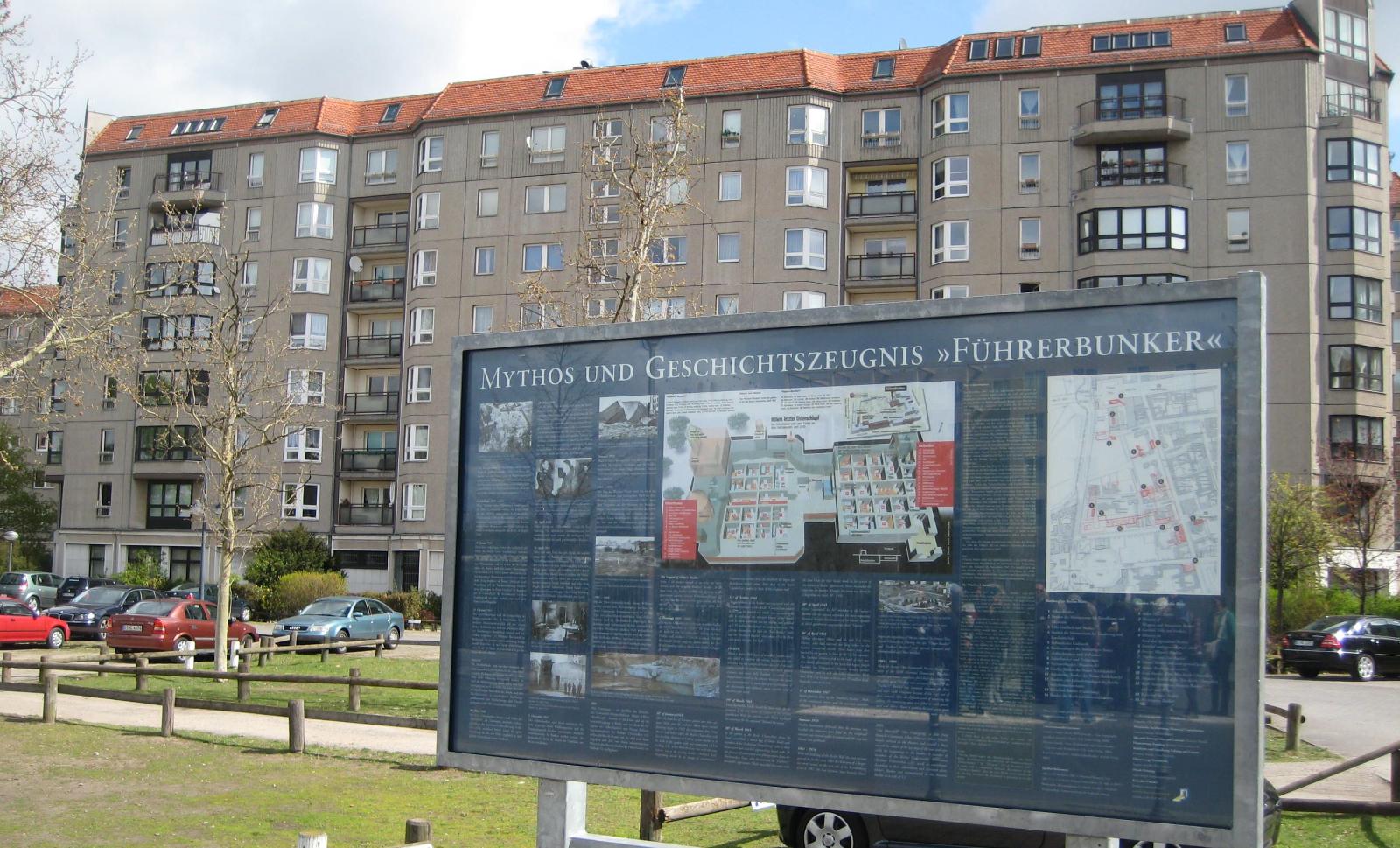Hitler's bunker (Führerbunker)

During the Second World War, Adolf Hitler made very few appearances in the capital, so there were no bunkers in Berlin for a long time. They appeared closer to the places of warfare, such as the "Werwolf" in northern Ukraine or the "Wolfsschanze" in eastern Prussia. The construction of the Berlin bunker started in 1936, but it was never finished: as long as the war was going well for the Germans, nobody thought that the Fuhrer would need a refuge in the capital.
That all changed in 1943, however, when the bombing of Berlin intensified considerably and the Wehrmacht had to retreat repeatedly. The design was improved: a deeper Führerbunker was dug underneath the so-called Vorbunker, intended directly for Adolf Hitler.
Bunker design
The Führer's bunker was five metres underground: four of these were a layer of reinforced concrete. The entrance from the bunker led directly to the Reich Chancellery (Reichskanzlei), where the most important decisions and decrees were made and signed. The bunker's exit led directly to the Reichskanzlei, where the most important decisions were made and decrees signed.
The bomb shelter, according to researchers' estimates, consisted of almost 30 small rooms and occupied 250 square metres. The rooms were furnished with expensive and elegant furniture, and antique paintings were hung in some rooms. Inside, Hitler had an entire flat: an entrance hall, a living room, Eva Anna Paula Braun's bedroom and, indeed, a study. Its furnishings were even recreated: according to witnesses, a portrait of Friedrich the Great (Friedrich der Große) hung on the wall, a telephone was placed on the table for emergency communication and a small library of the Fuhrer was located nearby. The office had a conference room next to it, where Hitler held meetings with his military commanders.
The bunker was equipped with a state-of-the-art ventilation system, but even that did not save the dampness — the fact is that the bunker was below groundwater level. As a result, the Germans had to install special pumps that constantly pumped water out of the building. Electricity was generated by a special diesel generator, and water for the Führer was pumped out of a well.
However, the Führer was not the only one to enjoy these facilities: in addition to Eva Braun, Martin Ludwig Bormann, Paul Joseph Goebbels with his wife and six children, as well as several dozen staff from medical staff to secretaries moved into the bunker with him.
Exactly two months after Hitler moved into the bunker, the Red Army launched an operation that went down in history as the "Battle of Berlin". After that, the Führer took no chances and did not leave the bunker. Soon the Nazi leader finally accepted that the war was over. At the same time, he promised not to leave Berlin and to shoot himself. At the very end of April he did so; his wife, Eva Braun, took cyanide.

After the war, the Soviet Union developed a programme to destroy the landmarks of Nazi Germany. For example, the Reich Chancellery building was razed to the ground, but the Führerbunker was left untouched. The Führerbunker was not touched, but they tried to blow it up, but failed to cause any serious damage.
The bunker's underground rooms remained untouched under the rubble until the late 1980s. They were discovered by builders during the construction of apartment blocks. Then they were finally destroyed, and there is now a car park above the bomb shelter. It was not until 8 June 2006 that an information board with information about the bunker appeared on the site.

A new history of the bunker
These days, the German Historical Museum (Deutsches Historisches Museum) has created an exact replica of the room where Adolf Hitler lived and died. The place is called "Hitler's Bunker", although it is merely a reconstruction of the bunker's living room, measuring 9 square metres. It is a typical German "bourgeois" living room from the 1940s, furnished with simple wooden furniture. There is a massive desk, a sofa and two armchairs with wooden armrests, a square coffee table and a large floor clock. A Persian rug lies on the concrete floor. All visitors now have the opportunity to see for themselves the setting in which the man who caused the world's bloodiest and most brutal war spent his last days.

Address: Gertrud-Kolmar-Straße 14, 10117 Berlin.
Official webpage: https://www.berliner-unterwelten.de/verein/forschungsthema-untergrund/bunker-und-ls-anlagen/fuehrerbunker.html
